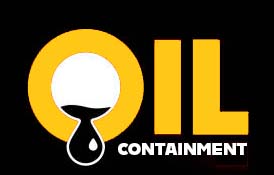In the oil industry, containment barriers play a vital role in preventing the spread of hazardous materials in the event of a spill or leak. These barriers are crucial for protecting the environment and ensuring the safety of workers. One effective material for creating containment barriers in the oil industry is polyurea. Here, we will discuss how to properly create containment barriers using polyurea for researchers and professionals in secondary containment.
Understanding the Importance of Containment Barriers
Secondary containment is a crucial aspect of oil industry safety measures. Containment barriers are designed to prevent hazardous materials from escaping into the environment in the event of a spill or leak. Without proper containment barriers in place, the consequences of a spill can be catastrophic, resulting in environmental damage, regulatory fines, and harm to human health.
Polyurea is a versatile material that is commonly used for creating containment barriers in the oil industry. It is known for its durability, flexibility, and chemical resistance, making it an ideal choice for secondary containment applications. When properly applied, polyurea can provide a strong and effective barrier that helps to contain spills and protect the surrounding environment.
Steps for Creating Effective Containment Barriers with Polyurea
-
Site Assessment: Before creating a containment barrier, it is important to conduct a thorough site assessment to identify potential risks and determine the best placement for the barrier. Consider factors such as slope, soil type, and proximity to water sources when designing the containment system.
-
Surface Preparation: Proper surface preparation is essential for ensuring the adhesion of the polyurea coating. Surfaces should be clean, dry, and free of any contaminants or debris that could interfere with the application process.
-
Application Process: When applying polyurea for containment barriers, it is important to follow the manufacturer’s instructions carefully. Polyurea is typically sprayed onto the surface using specialized equipment, forming a seamless and waterproof barrier that effectively contains spills.
-
Quality Control: After the polyurea coating has been applied, it is important to conduct quality control checks to ensure that the barrier is properly installed and free of any defects. This may include visual inspections, adhesion testing, and leak testing to confirm the integrity of the containment system.
-
Maintenance and Monitoring: Once the containment barrier is in place, it is important to establish a maintenance and monitoring routine to ensure its ongoing effectiveness. Regular inspections, repairs, and testing can help to identify and address any issues before they escalate into larger problems.
Conclusion
Creating effective containment barriers in the oil industry is essential for protecting the environment and ensuring the safety of workers. Polyurea is a versatile and durable material that is well-suited for secondary containment applications. By following the steps outlined above and utilizing polyurea as a barrier material, researchers and professionals can create strong and reliable containment systems that help to prevent the spread of hazardous materials in the event of a spill or leak.
